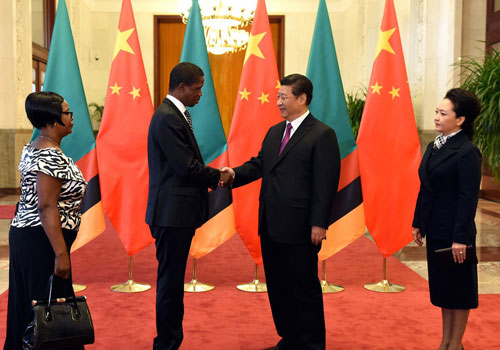
Between 1924 and 1913, there was the development of the copper belt this led to a lot of focus on copper mining and that was the main focus of the government at the time. The years between 1953 and 1963, there was the federation of northern Rhodesia, Southern Rhodesia and Nyasaland were formed as part of the British Empire. The confederation concentrated resources to Southern Rhodesia which was the capital of the confederation and left little to no development in Zambia or Northern Rhodesia as it was known then.
The emergence of mining in the copper belt resulted in many local Zambians moving from agriculture to the mining cities in search of jobs from the British and over 50 years later Zambians are still looking for jobs from the Chinese. The migration from agriculture to mining meant that Zambians could not meet their food security needs and often had to import food.
When copper prices fell in the 1980s and 1990s, many lost their mining jobs and the Zambian government was not able to meet its financial obligations. Zambia turned to the Chinese for investment in infrastructure projects. In April 2018, Outgoing Chinese Ambassador to Zambia, Yang Youming even claimed that Zambia is the 2nd largest destination of Chinese investment in Africa with projects toalling close to $4 billion USD. More recently, Zambia has not been able to fulfill its debt obligations with the Chinese and there are reports that some government owned entities have been taken over by the Chinese who gave them loans. Below are a list of Zambian government infrastruture projects and institutions that were partially or wholly funded by the Chinese:
- Kenneth Kaunda International Airport, the Ndola International airport, and an International Conference Center to be completed by 2022
- Construction of three new milling plants and the Lower Kafue Gorge hydro-power plant
- Construction of the 321-kilometre Lusaka-Ndola dual carriageway at a cost of US$1.2 billion
- Expansion of the Levy Mwanawasa Teaching Hospital
However, recent reports also show that the following government institutions are being taken over by the Chinese because the Zambians have defaulted on their debt:
- ESCO which is the strategic national asset which supplies electricity to 80% of Zambian is now partially owned by China
- Lusaka International is partially owned by China the cobalt and nickel mines the copper mines are also all owned in part by China
- 60% of the national the Zambia National Broadcasting Corporation is owned by the Chinese
- The current president Edgar Lungu borrowed $8BN dollars since he came to power and $4BN is owed to China. In exchange for this he sold the infrastructure of the country, for example, one of the main roads in Lusaka is actually owned by the Chinese.

What upsets a lot of people is the facts that the Zambian president Edgar Lungu is not defending Zambian interests but the major question is when has Zambia ever owned its own resources? Zambia has justified the relationship with China that they were getting jobs, technology transfer and business opportunities. Zambia is the African example that shows that no amount of direct foreign investment will bring prosperity to an African nation. Innovation and African problem solving has to be the solution to poverty. The people must be empowered to own the means of production to bring economic development like in South Korea, Singapore and China.
Zambia has an estimated $68 billion GDP (PPP) and an annual growth rate of 3.6% and GDP per capita of about $4,000.





2 responses to “Resource Ownership in Zambia: The Good, the Bad & the Ugly”
Zambia is better than Zimbabwe. It has fewer resources and higher GDP yet Zimbabweans like to show off.
We Africans are funny we resist the Malemas & Sankaras who talk about economic empowerment , yet we are ready to fight for foreigners from Europe who own our resources. The level of self hatred is alarming. The Chinese are doing this because they have seen European success in owning African resources .